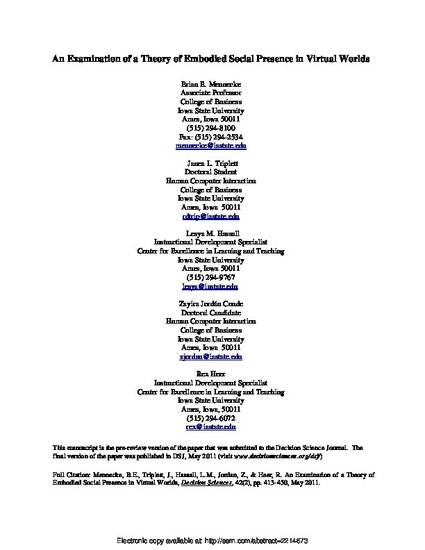
Article
An Examination of a Theory of Embodied Social Presence in Virtual Worlds
Decision Sciences
Document Type
Article
Disciplines
Publication Version
Submitted Manuscript
Publication Date
5-1-2011
DOI
10.1111/j.1540-5915.2011.00317.x
Abstract
In this article, we discuss and empirically examine the importance of embodiment, context, and spatial proximity as they pertain to collaborative interaction and task completion in virtual environments. Specifically, we introduce the embodied social presence (ESP) theory as a framework to account for a higher level of perceptual engagement that users experience as they engage in activity-based social interaction in virtual environments. The ESP theory builds on the analysis of reflection data from Second Life users to explain the process by which perceptions of ESP are realized. We proceed to describe implications of ESP for collaboration and other organizational functions.
Copyright Owner
The Authors
Copyright Date
2011
Language
en
File Format
application/pdf
Citation Information
Brian E. Mennecke, Janea L. Triplett, Lesya M. Hassall, Zayira Jordán Conde, et al.. "An Examination of a Theory of Embodied Social Presence in Virtual Worlds" Decision Sciences Vol. 42 Iss. 2 (2011) p. 413 - 450 Available at: http://works.bepress.com/lesya-hassall/5/

This is the submitted manuscript of an article from Decision Sciences 42 (2011): 413–450, doi:10.1111/j.1540-5915.2011.00317.x. Posted with permission.